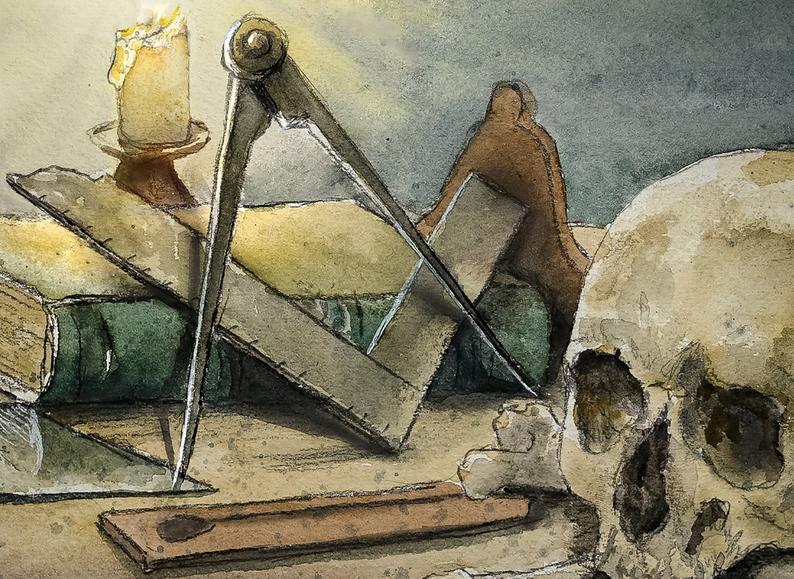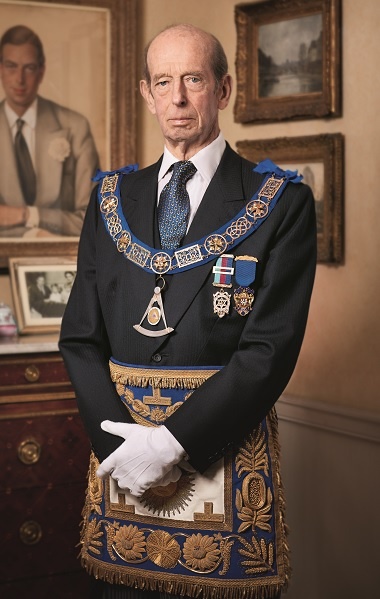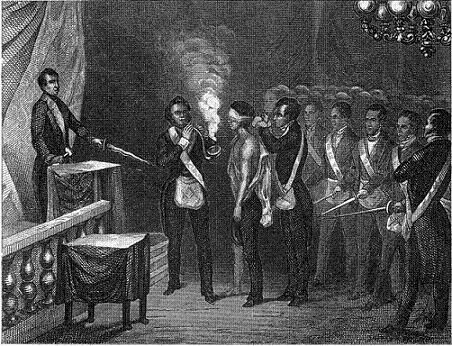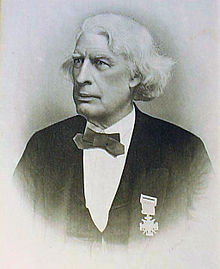
Dr. Albert Gallatin Mackey [1] was an American medical doctor and is best known for his books and articles about Freemasonry. In particularly in 1858 he set forth his Twenty-five Ancient Landmarks to establish a universally-recognized method by which Freemasons across the globe, could operate. Mackey’s Landmarks have been studied and debated, yet remain the standard by which Freemasons meet and work.
LANDMARK ONE
The modes of recognition are, of all the Landmarks, the most legitimate and unquestioned. They admit of no variation; and if ever they have suffered alteration or addition, the evil of such a violation of the ancient law has always made itself subsequently manifest. An admission of this is to be found in the proceedings of the Masonic Congress at Paris, where a proposition was presented to render these modes of recognition once more universal – a proposition which never would have been necessary, if the integrity of this important Landmark had been rigorously preserved.
LANDMARK TWO
The division of Symbolic Masonry into three Degrees is a Landmark that has been better preserved than almost any other, although even here the mischievous spirit of innovation hag left its traces, and by the disruption of its concluding portion from the Third Degree, a want of uniformity has been created in respect to the final teaching of the Master’s order, and the Royal Arch of England, Scotland, Ireland, and America, and the “high degrees” of France and Germany, are all made to differ in the mode in which they lead the neophyte to the great consummation of all symbolic masonry. In 1813, the Grand Lodge of England vindicated the ancient Landmark, by solemnly enacting that ancient craft Masonry consisted of the three degrees: Entered Apprentice, Fellow Craft, and Master Mason, including the Holy Royal Arch; but the disruption has never been healed, and the Landmark, although acknowledged in its integrity by all, still continues to be violated.
LANDMARK THREE
The Legend of the Third Degree is an important Landmark, the integrity of which has been well preserved. There is no rite of Masonry, practiced in any country or language, in which the essential elements of this legend are not taught. The lectures may vary, and indeed are constantly changing, but the legend has ever remained substantially the same; and it is necessary that it should be so, for the legend of the Temple Builder constitutes the very essence and identity of Masonry; any rite which should exclude it, or materially alter it, would at once, by that exclusion or alteration, cease to be a Masonic rite.
LANDMARK FOUR
The government of the Fraternity by a presiding officer called a Grand Master, who is elected from the body of the craft, is a Fourth Landmark of the Order. Many persons ignorantly suppose that the election of the Grand Master is held in consequence of a law or regulation of the Grand Lodge. Such, however, is not the case. The office is indebted for its existence to a Landmark of the Order. Grand Masters are to be found in the records of the institution long before Grand Lodges were established; and if the present system of legislative government by Grand Lodges were to be abolished, a Grand Master would be necessary. In fact, although there has been a period within the records of history, and indeed of very recent date, when a Grand Lodge was unknown, there never has been a time when the craft did not have their Grand Master.
LANDMARK FIVE

The prerogative of the Grand Master to preside over every assembly of the craft, wheresoever and whensoever held, is a fifth Landmark. It is in consequence of this law, derived from ancient usage, and not from any special enactment, that the Grand Master assumes the chair, or as it is called in England, “the throne,” at every communication of the Grand Lodge; and that he is also entitled to preside at the communication of every Subordinate Lodge, where he may happen to be present.
LANDMARK SIX
The prerogative of the Grand Master to grant Dispensations for conferring degrees at irregular times, is another and a very important Landmark. The statutory law of Masonry requires a month, or other determinate period, to elapse between the presentation of a petition and the election of a candidate. But the Grand Master has the power to set aside or dispense with this probation, and allow a candidate to be initiated at once. This prerogative he possessed in common with all Masters, before the enactment of the law requiring a probation, and as no statute can impair his prerogative, he still retains the power, although the Masters of Lodges no longer possess it.
LANDMARK SEVEN
The prerogative of the Grand Master to give dispensations for opening and holding Lodges is another Landmark. He may grant, in virtue of this, to a sufficient number of Masons, the privilege of meeting together and conferring degrees. The Lodges thus established are called “Lodges under Dispensation.” They are strictly creatures of the Grand Master, created by his authority, existing only during his will and pleasure, and liable at any moment to be dissolved at his command. They may he continued for a day, a month, or six months; but whatever be the period of their existence, they are indebted for that existence solely to the grace of the Grand Master.

LANDMARK EIGHT
The prerogative of the Grand Master to make masons at sight, is a Landmark which is closely connected with the preceding one. There has been much misapprehension in relation to this Landmark, which misapprehension has sometimes led to a denial of its existence in jurisdictions where the Grand Master was perhaps at the very time substantially exercising the prerogative, without the slightest remark or opposition. It is not to be supposed that the Grand Master can retire with a profane into a private room, and there, without assistance, confer the degrees of Freemasonry upon him. No such prerogative exists, and yet many believe that this is the so much talked of right of “making Masons at sight”. The real mode and the only mode of exercising the prerogative is this: The Grand Master summons to his assistance not less than six other masons, convenes a Lodge, and without any previous probation, but on sight of the candidate, confers the degrees upon him. after which he dissolves the Lodge. and dismisses the brethren. Lodges thus convened for special purposes are called occasional lodges,” This is the only way in which any Grand Master within the records of the institution has ever been known to “make a Mason at sight”. The prerogative is dependent upon that of granting dispensations to open and hold Lodges. If the Grand Master has the power of granting to any other Mason the privilege of presiding over Lodges working by his dispensation, he may assume this privilege of presiding to himself; and as no one can deny his right to revoke his dispensation granted to a number of brethren at a distance, and to dissolve the Lodge at his pleasure, it will scarcely be contended that he may not revoke his dispensation for a Lodge over which he himself has been presiding, within a day, and dissolve the Lodge as soon as the business for which he had assembled it is accomplished. The making of Masons at sight is only the conferring of the degrees by the Grand Master, at once, in an occasional Lodge, constituted by his dispensing power for the purpose, and over which he presides in person.
LANDMARK NINE
The necessity of masons to congregate in lodges is another Landmark. It is not to be understood by this that any ancient Landmark has directed that permanent organization of subordinate Lodges which constitutes one of the features of the Masonic system as it now prevails, but the landmarks of the Order always prescribed that Masons should from time to time congregate together, for the purpose of either operative or speculative labor, and that these congregations should be called Lodges. Formerly these were extemporary meetings called together for special purposes, and then dissolved, the brethren departing to meet again at other times and other places, according to the necessity of circumstances. But warrants of constitution, by-laws, permanent officers and annual arrears, are modern innovations wholly outside of the Landmarks, and dependent entirely on the special enactments of a comparatively recent period.
LANDMARK TEN
The government of the craft, when so congregated in a Lodge by a Master and two Wardens, is also a Landmark. To show the influence of this ancient law, it may be observed by the way, that a congregation of Masons meeting together under any other government, as that for instance of a president and vice-president, or a chairman and sub=chairman, would not be recognized as a Lodge, The presence of a Master and two Wardens is as essential to the valid organization of a Lodge as a warrant of constitution is at the present day. The names, of course, vary in different languages, the Master, for instance, being called “Venerable” in French Masonry, and the Wardens “Surveillants,” but the officers, their number, prerogatives and duties, are everywhere identical.

LANDMARK ELEVEN
The necessity that every lodge, when congregated, should be duly tiled, is an important Landmark of the institution, which is never neglected. The necessity of this law arises from the esoteric character of Masonry. As a secret institution, its portals must of course be guarded from the intrusion of the profane, and such a law must therefore always have been in force from the very beginning of the Order. It is therefore properly classed among the most ancient Landmarks. The office of Tiler is wholly independent of any special enactment of Grand or Subordinate Lodges, although these may and do prescribe for him additional duties, which vary in different jurisdictions. But the duty of guarding the door, and keeping off Cowans and eavesdroppers, is an ancient one, which constitutes a Landmark for the government.
LANDMARK TWELVE
The right of every mason to be represented in all general meetings of the craft and to instruct his representatives, is a twelfth Landmark. Formerly, these general meetings, which were usually held once a year, were called “General Assemblies,” and all the fraternity, even to the youngest Entered Apprentice, were permitted to be present. Now they are called “Grand Lodges,” and only the Masters and Wardens of the Subordinate Lodges are summoned. But this is simply as the representatives of their members. Originally, each Mason represented himself; now he is represented by his officers. was a concession granted by the fraternity about 1717, and of course does not affect the integrity of the Landmark, for the principle of representation is still preserved. The concession was only made for purposes of convenience.
LANDMARK THIRTEEN
The Right of every mason to appeal from the decision of his brethren in Lodge convened, to the Grand Lodge or General Assembly of Masons, is a Landmark highly essential to the preservation of justice, and the prevention of oppression. A few modern Grand Lodges, in adopting a regulation that the decision of Subordinate Lodges, in cases of expulsion, cannot be wholly set aside upon an appeal, have violated this unquestioned Landmark, as well as the principles of just government.
LANDMARK FOURTEEN
The right of every Freemason to visit and sit in every regular Lodge is an unquestionable Landmark of the Order.” This is called “the right of visitation.” This right of visitation has always been recognized as an inherent right, which inures to every Mason as he travels through the world. And this is because Lodges are justly considered as only divisions for convenience of the universal Masonic family. It is right may, of course be impaired or forfeited on special occasions by various circumstances; but when admission is refused to a Mason in good standing, who knocks at the door of a Lodge as a visitor, it is to be expected that some good and sufficient reason shall be furnished for this violation, of what is in general a Masonic right, founded on the Landmarks of the Order.
LANDMARK FIFTEEN
It is a Landmark of the Order, that no visitor, unknown to the brethren present, or to some one of them as a Mason, can enter a Lodge without first passing an examination according to ancient usage. Of course, if the visitor is known to any brother present to be a Mason in good standing, and if that brother will vouch for his qualifications, the examination may be dispensed with, as the Landmark refers only to the cases of strangers, who are not to be recognized unless after strict trial, due examination, or lawful information.
LANDMARK SIXTEEN
No Lodge can interfere in the business of another Lodge, nor give degrees to brethren who are members of other Lodges, This is undoubtedly an ancient Landmark, founded on the great principles of courtesy and fraternal kindness, which are at the very foundation of our institution. It has been repeatedly recognized by subsequent statutory enactments of all Grand Lodges.
LANDMARK SEVENTEEN
It is a Landmark that every Freemason is Amenable to the Laws and Regulations of the masonic jurisdiction in which he resides, and this although he may not be a member of any Lodge. Non-affiliation, which is, in fact in itself a Masonic offense, does not exempt a Mason from Masonic Jurisdiction.
LANDMARK EIGHTEEN
Certain qualifications of candidates for initiation are derived from a Landmark of the Order. These qualifications are that he shall be a man, shall be un-multilated, free born, and of mature age. That is to say, a woman, a cripple, or a slave, or one born in slavery, is disqualified for initiation into the rites of Masonry. Statutes, it is true, have from time to time been enacted, enforcing or explaining these principles; but the qualifications really arise from the very nature of the Masonic institution, and from its symbolic teachings, and have always existed as landmarks.
LANDMARK NINETEEN

A belief in the existence of God as the Grand Architect of the universe, is one of the most important Landmarks of the Order. It has been always deemed essential that a denial of the existence of a Supreme and Superintending Power, is an absolute disqualification for initiation. The annals of the Order never yet have furnished or could furnish an instance in which an avowed atheist was ever made a Mason. The very Initiatory ceremonies of the first degree forbid and prevent the possibility of so monstrous an occurrence.
LANDMARK TWENTY
Subsidiary to this belief in God, as a Landmark of the Order, is the belief in a resurrection to a future life. This Landmark is not so positively impressed on the candidate by exact words as the preceding; but die doctrine is taught by very plain implication, and runs through the whole symbolism of the Order. To believe in Masonry, and not to believe in a resurrection, would be an absurd anomaly, which could only be excused by the reflection, that he who thus confounded his belief and his skepticism, was so ignorant of the meaning of both theories as to have no rational foundation for his knowledge of either.
LANDMARK TWENTY-ONE
It is a Landmark, that a “Book of the Law” shall constitute an indispensable part of the furniture of every Lodge. I say advisedly, a Book of the Law, because it is not absolutely required that everywhere the Old and New Testaments shall be used. The “Book of the Law” is that volume which, by the religion of the country, is believed to contain the revealed will of the Grand Architect of the universe. Hence, in all Lodges in Christian countries, the Book of the Law is composed of the Old and New Testaments; in a country where Judaism was the prevailing faith, the Old Testament alone would be sufficient; and in Mohammedan countries, and among Mohammedan Masons the Koran might be substituted. Masonry does not attempt to interfere with the peculiar religious faith of its disciples, except so far as relates to the belief in the existence of God, and what necessarily results from that belief.” The Book of the Law is to the speculative Mason his spiritual Trestle- board; without this he cannot labor; whatever he believes to be the revealed will of the Grand Architect constitutes for him this spiritual Trestle-board, and must ever be before him in his hours of speculative labor, to be the rule and guide of his conduct The Landmark, therefore, requires that a Book of the Law, a religious code of some kind, purporting to be an exemplar of the revealed will of God, shall form in essential part of the furniture of every Lodge.

LANDMARK TWENTY-TWO
The equality of all Freemasons is another Landmark of the Order. This equality has no reference to any subversion of those gradations of rank which have been instituted by the usages of society. The monarch, the nobleman or the gentleman is entitled to all the influence, and receives all the respect which rightly belong to his exalted position. But the doctrine of Masonic equality implies that, as children of one great Father, we meet in the Lodge upon the level-that on that level we are all traveling to one predestined goal, that in the Lodge genuine merit shall receive more respect than boundless wealth, and that virtue and knowledge alone should be the basis of all Masonic honors, and be rewarded with preferment When the labors of the Lodge are over, and the brethren have retired from their peaceful retreat, to mingle once more with the world, each will then again resume that social position, and exercise the privileges of that rank, to which the customs of society entitle him.
LANDMARK TWENTY-THREE
The secrecy of the institution is another and a most important Landmark. There is some difficulty in precisely defining what is meant by a “secret society,” If the term refers, as perhaps in strictly logical language it should, to those associations whose designs are concealed from the public eye, and whose members are unknowing which produce their results in darkness, and whose operations are carefully hidden from the public gaze – a definition which will be appropriate to many political clubs and revolutionary combinations in despotic countries, where reform, if it is at all to be effected, must be effected by stealth – then clearly Freemasonry is not a secret society. Its design is not only publicly proclaimed. but is vaunted by its disciples as something to be venerated; its disciples are known, for its membership is considered an honor to be coveted; it works for a result of which it boasts, the civilization, and reformation of his manners. But if by a Secret society is meant, and this is the most popular understanding of the term, a society in which there is a certain amount of knowledge, whether it be of methods of recognition, or of legendary and traditional learning, which is imported to those only who have passed through an established form of initiation, the form itself being also concealed or esoteric, then in this sense is Freemasonry undoubtedly a secret society. Now this form of secrecy is a form inherent in it, existing with It from its very foundation, and secured to it by its ancient Landmarks. If divested of its secret character, it would lose its identity, and would cease to be Freemasonry. whatever objections may, therefore, be made to the institution, on account of its secrecy, and however much some unskillful brethren have been willing in times of trial, for the sake of expediency, to divest it of its secret character, it will be ever impossible to do so, even were die Landmark not standing before us as an insurmountable obstacle; because such change of its character would be social suicide, and the death of the Order would follow its legalized exposure. Freemasonry, as a secret association, has lived unchanged for centuries an open society it would not last for as many years.
LANDMARK TWENTY-FOUR
The foundation of a Speculative Science upon an Operative Art, and the symbolic use and explanation of the terms of that art, for purposes of religious or moral teaching, constitute another Landmark of the Order. The Temple of Solomon was the cradle of the institution,” and, therefore, the reference to the operative Masonry, which constructed that magnificent edifice, to the materials and implements which were employed in its construction, and to the artists who were engaged in the building, are all component and essential parts of the body of Freemasonry, which could not be subtracted from it without an entire destruction of the whole identity of the Order. Hence, all the comparatively modern rites of Masonry, however they may differ in other respects, religiously preserve this temple history and these operative elements, as the substratum of all their modifications of the Masonic system.
LANDMARK TWENTY-FIVE
The last and crowning Landmark of all is, that these Landmarks can never be changed. Nothing can be subtracted from them-nothing can be added to them-not the slightest modification can be made in them. As they were received from our predecessors, we are bound by the most solemn obligations of duty to transmit them to our successors. Not one jot or one title of these unwritten laws can be repealed; for in respect to them, we are not only willing but compelled to adopt the language of the sturdy old barons of England – “Nolumus legen mutari.”

By Albert G.Mackey (March 12, 1807 – June 20, 1881)
POST SCRIPTUM
A Masonic Lodge is not limited by the number of Landmarks it may wish to adopt. For example, some Great Lodges have more than one hundred, whilst others – like the Great Lodge of Massachusetts – only seven. The latter being the number of Landmarks indicated by our illustrious American Brother Nathan Roscoe Pound (1870-1964).
[1] Born: 13 March 1807, Charleston, South Carolina, United States – Died: 21 June 1881, Fort Monroe National Monument, Hampton, Virginia, United States
- His Majesty’s Servant , David Garrick Esq – Freemason ? - June 7, 2024
- Influencia de la Masonería en Chile - April 29, 2024
- Pomegranate in Freemasonry – its significance - March 11, 2024
